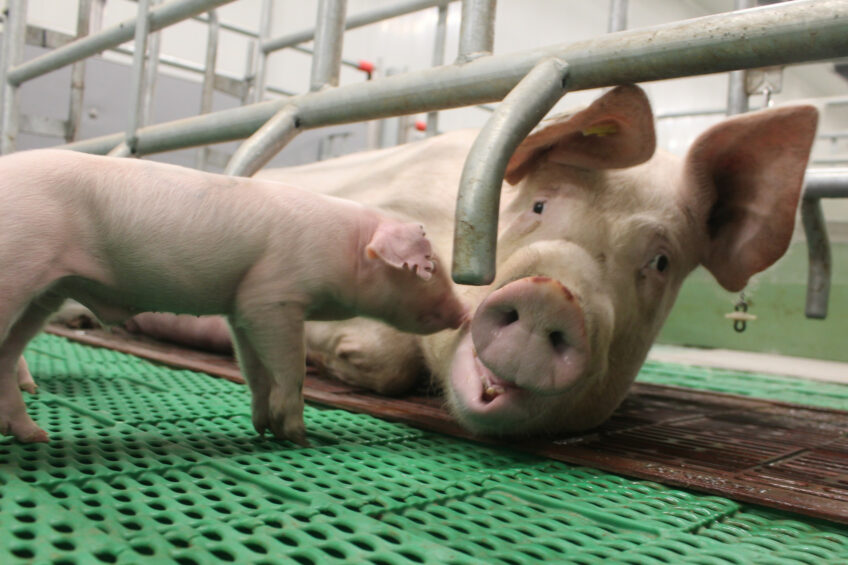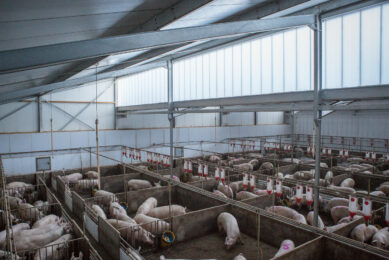Sampling size for animal welfare audits; how many pigs is enough?

Pig welfare is of growing concern for swine producers across the planet. Various systems have been put in place to assess that welfare standards do in fact get applied on-farm. Yet how are the assessment systems assessed? Health and welfare expert Prof Monique Pairis-Garcia shares her views.
In the last decade, consumers have demanded greater transparency with how animals are kept and managed on farms to ensure the products in which they are consuming are sourced from verifiable companies in compliance with good animal welfare practices.
Pig welfare assessment protocols
In response to these demands, animal welfare assessments and audits have been developed on a global scale to verify that specific animal welfare standards and policies are being upheld. In the US, Pork Quality Assurance (PQA) Plus is the most used assessment tool.
In Canada, the PigCare programme was developed through the Canadian Pork Excellence Program based on Canadian’s code of practice for the care and handling of pigs and the European Welfare Quality assessment protocol for pigs is used widely across many countries in Europe.
Collecting data from pig responses
Across all these programmes, emphasis is placed on collecting data from animal-based measures (i.e. direct behavioural and physiological responses of the animal). Animal-based measures like body condition and severe lameness scoring serve as direct indicators of welfare and are primarily assessed using only a subpopulation or sample of animals on-farm. These sample sizes vary, with some programmes like PigCare and PQA Plus basing sample size on farm inventory, while other sample sizes like Welfare Quality are based on stage of production and the measure being evaluated.
As with any programme, continuous improvement through programmatic revision and evaluation is needed. More recently, interest in understanding the relationship between the sampling size of assessment tool and the true occurrence of animal-based measures on-farm has led to a research project completed by Iowa State and North Carolina state to look at just that. Over 230,000 pigs were assessed across different production stages and farms in the US.
Overall, the true occurrences of animal-based measures across production stages were low with open wounds demonstrating the greatest occurrence at 1.4% when averaged across production stage
Animal-based measures
In total 10 animal-based measures [i.e., body condition score one (BCS 1), open wounds, prolapses, severe lameness, severe scratches, shoulder sores, abscesses, tail biting, hernias and vulva injuries] used in the PQA Plus programme were assessed, and the final occurrence of each animal-based measure was calculated using the total farm inventory. Overall, the true occurrences of animal-based measures across production stages were low with open wounds demonstrating the greatest occurrence at 1.4% when averaged across production stages.
Severe lameness, tail bites and severe scratches all fell under 0.5% occurrence of the total farm inventory. Given these low occurrences, the majority of the sample sizes used in the assessment tool underestimated the true occurrence of animal-based measures on the sow, nursery and finishing farms. In other words: the sample size underestimates the welfare situation on farm with poor welfare outcomes only found in a small percentage (<1%) of the farm.
Underestimating the occurrence
So, what does this mean to the industry? The verdict is still out. Based on this population of animals evaluated in the study, the sample methods we are using for on-farm assessments and audits are likely underestimating the true occurrence of animal-based measures on-farm. With that, the true occurrence of animal-based measures that we historically evaluate to assess welfare are very low and identifying a sample size that can accurately reflect such a small population of animals will be difficult.
This will be a good starting place for the global swine industry to work with animal welfare scientists to truly reflect on what data we are receiving from our assessment and audit programs and how we can use that data to truly impact animal welfare on-farms beyond the assessment and audit process.











